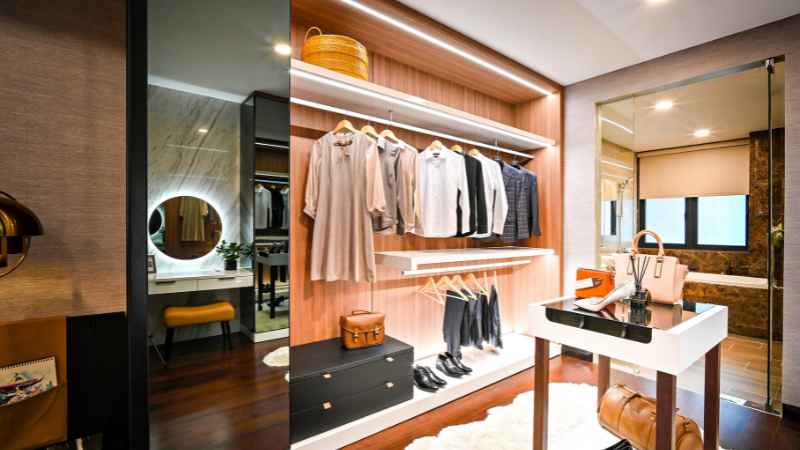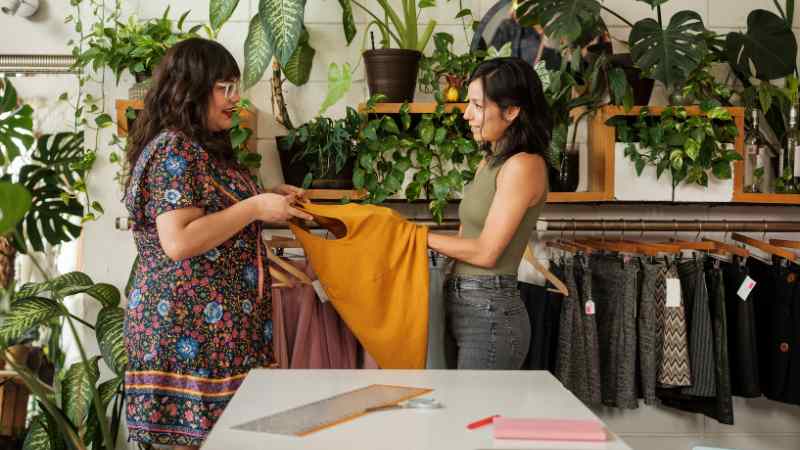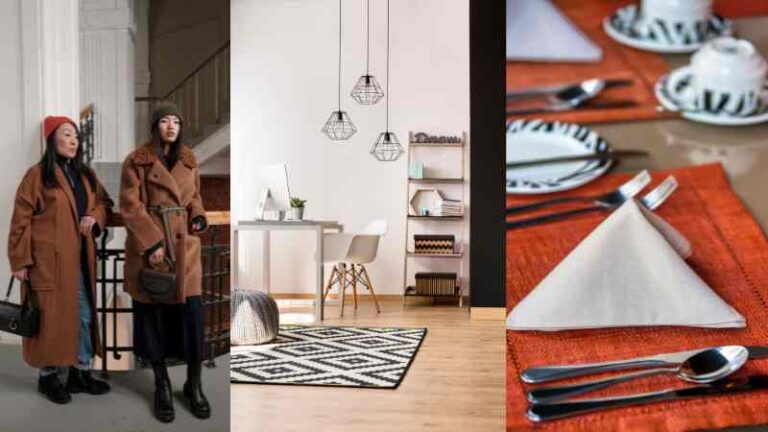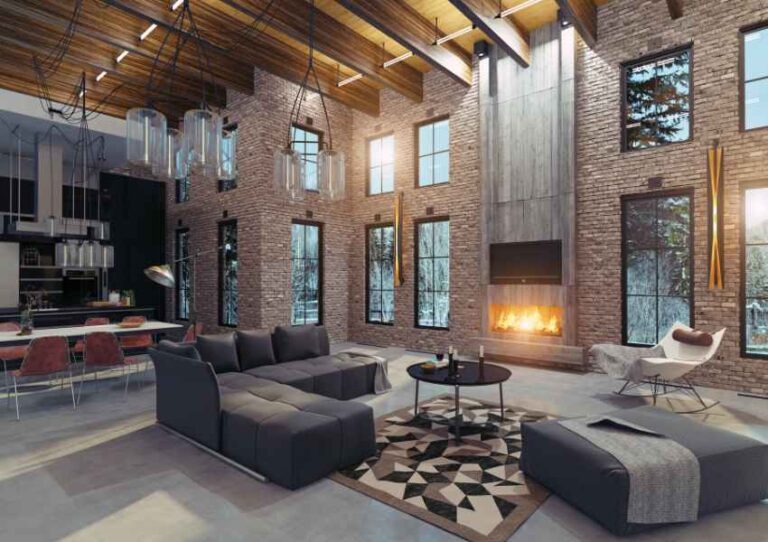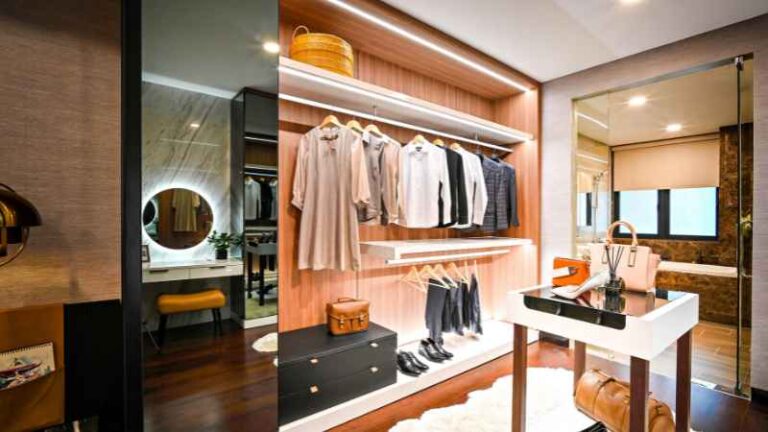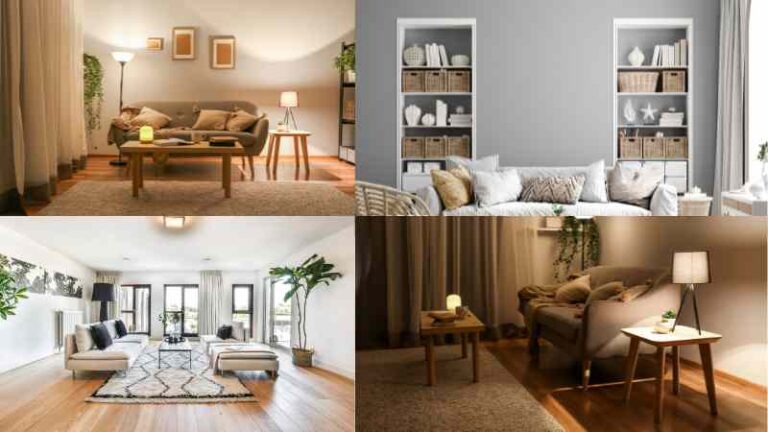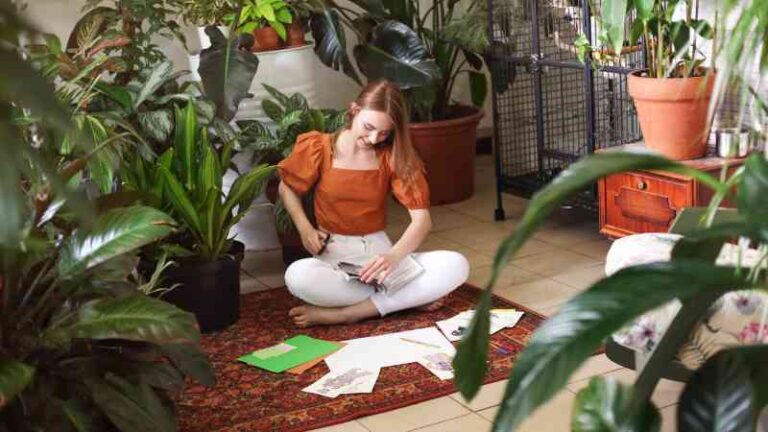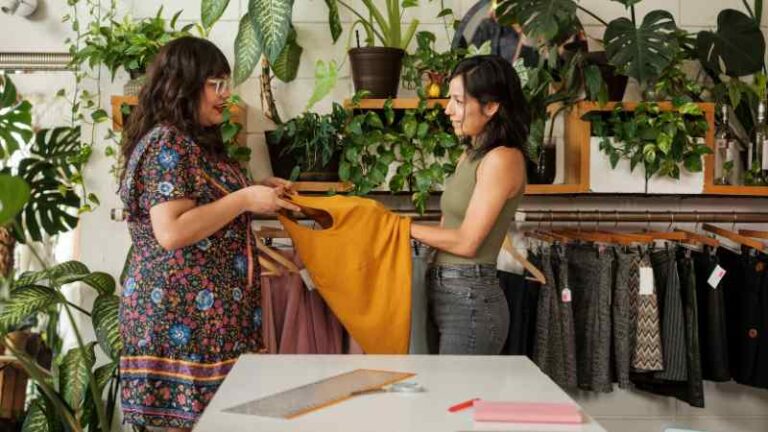DIY Home Decor refers to enhancing and personalizing living spaces through hands-on, creative, and often cost-effective methods. It involves crafting, repurposing, or upcycling various items to decorate and transform rooms within a home. This approach empowers individuals to infuse their unique personality and style into their living spaces through imaginative, self-made decorative elements.
Personalized home decor is crucial as it allows individuals to align their surroundings with their tastes, preferences, and lifestyles. By incorporating personal touches, such as handmade or customized items, one can create a space that reflects their identity and creates a sense of belonging and comfort. This individualized approach goes beyond aesthetics, fostering an environment that speaks to the inhabitants’ emotions and experiences.
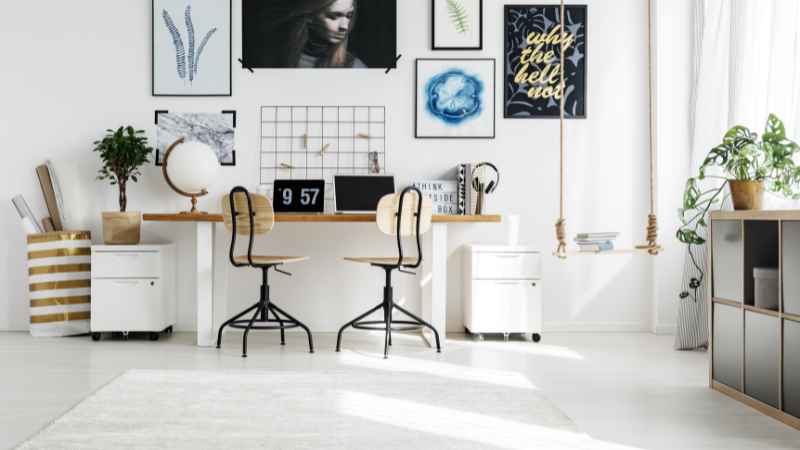
This guide is designed to assist individuals in navigating the realm of DIY home decor. It offers a comprehensive journey through various aspects of crafting and decorating, providing insights, techniques, and inspiration to empower readers to transform their spaces creatively. Divided into sections, the guide delves into understanding your space, exploring fundamental principles, embarking on DIY projects, ensuring safety, sustainability, and maintenance, and discovering sources of ongoing inspiration.
More Post : Wardrobe To Home: Matching Fashion To Decor
Understanding Your Space-Assessing Your Space
Room-by-room assessment: Understanding the unique attributes of each room in your home is crucial. This involves considering aspects like size, natural light, existing decor, and the room’s function to identify opportunities for enhancement and personalization.
Identifying focal points: Recognizing the key areas or elements within a room that draw attention or serve as natural focal points helps strategically plan decor projects to highlight or revamp these features.
Recognizing Personal Style and Preferences
Questionnaires or prompts for self-discovery: Utilizing questionnaires or prompts can aid in uncovering individual tastes, preferences, and the desired atmosphere for each space. Questions cover color preferences, preferred themes, and functional requirements, aiding in understanding personal aesthetics and needs.
Mood boards and visual inspiration: Creating mood boards or collages filled with images, colors, textures, and resonating patterns can help individuals visualize and solidify their preferences. This visual representation is a reference point when embarking on DIY projects, ensuring cohesion and alignment with personal style.
Color Theory and Palette Selection
Exploring Color Psychology
Color psychology delves into the emotional and psychological impacts of different colors. Understanding this can guide the selection of hues to evoke specific moods or feelings within a space. For instance, calming blues or greens can create a tranquil ambiance, while vibrant reds or yellows might energize or stimulate. Exploring how colors affect emotions and behaviors is fundamental to making informed choices when decorating.
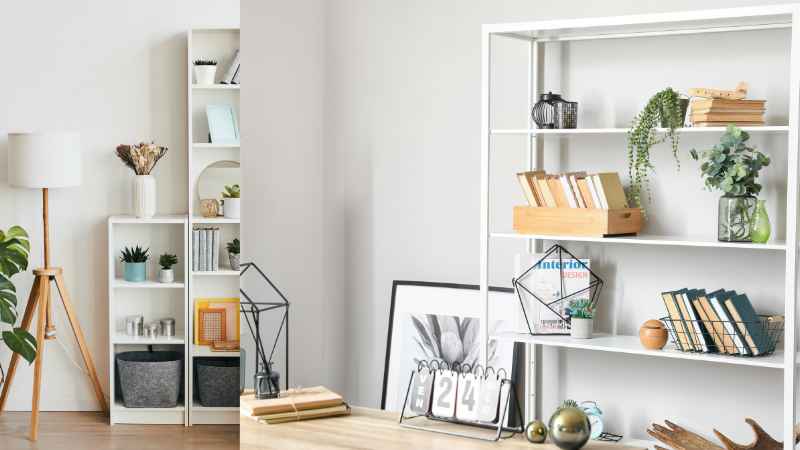
Harmonizing Color Schemes
Harmonizing colors involves combining shades that complement each other to create a cohesive and visually pleasing environment. Techniques such as monochromatic (using shades of a single color), complementary (pairing colors from opposite sides of the color wheel), or analogous (utilizing colors adjacent to each other on the color wheel) schemes are essential in ensuring a balanced and harmonious color palette throughout a space.
Textures and Materials
Textures add depth and visual interest to a room. Understanding the impact of textures involves recognizing how different surfaces—rough, smooth, shiny, matte—affect the overall feel of a space. Mixing textures can create contrast and dimension, adding layers to the visual experience. For example, a mix of soft fabrics, like velvet, against harder materials, such as wood or metal, can create a visually engaging contrast.
Exploring Different Materials and Their Uses
Different materials offer unique characteristics and serve various purposes in DIY decor projects. Exploring materials like wood, metal, fabric, glass, and natural elements can expand the creative possibilities. Understanding their properties, durability, and suitability for specific projects is crucial. For instance, wood might be perfect for crafting furniture or accents, while fabrics can be used for upholstery or creating decorative elements like throw pillows or curtains.
DIY Decor Projects by Room
Statement walls serve as focal points, elevating the visual appeal of a living room. DIY projects for this space include creating accent walls using techniques like paint effects, wallpaper, murals, or unconventional materials like reclaimed wood or fabric. Incorporating large-scale art or creating a gallery wall with personalized frames and artworks can also be impactful.
Creating Personalized Throw Pillows or Covers
Crafting custom throw pillows allows for a personal touch in the living room. This project involves sewing or decorating pillow covers with unique patterns, textures, or embroidery. It’s an opportunity to play with different fabrics, colors, and designs, adding comfort and individuality to seating areas.
Upcycling Furniture
Upcycling furniture breathes new life into existing pieces, offering a sustainable and creative way to revamp the living room. This might involve repainting, reupholstering, or repurposing furniture items. For instance, an old coffee table could be transformed with a fresh coat of paint or decoupage techniques to match the room’s aesthetic.
Bedroom
DIY Headboard Ideas
Crafting a headboard allows for a personalized touch in the bedroom. This project might involve creating a fabric-upholstered headboard, using reclaimed wood, or even a creative paint technique directly on the wall. It’s an opportunity to infuse the room with character and reflect personal style.
Customizing Bedding and Linens
Personalizing bedding and linens adds a unique charm to the bedroom. Techniques might include dyeing fabrics, adding embellishments like embroidery or appliqué, or creating custom patterns using fabric paints or stencils. Customized bedspreads, pillowcases, or duvet covers can transform the room’s ambiance.
Crafting Bedside Tables or Lamps
DIY bedside tables or lamps allow for functional and aesthetic improvements in the bedroom. Crafting tables using repurposed materials or building custom shelves adds character and functionality to the space. Similarly, creating custom lamps or revamping existing ones with new shades or decorative elements can enhance the room’s ambiance.
Kitchen
Revamping kitchen cabinets or shelves can transform the entire look of the kitchen. DIY projects might involve:
- Painting cabinets.
- Replacing or updating hardware.
- Applying decals or stencils.
- Even adding additional shelves or organizers.
These methods offer a cost-effective way to breathe new life into the kitchen space.
Handmade Table Settings or Centerpieces
Creating handmade table settings or centerpieces adds a personal and artistic touch to the kitchen or dining area. Projects include crafting custom placemats, napkin rings, or table runners. Making centerpieces using fresh flowers, candles, or DIY decorative pieces can enhance the overall dining experience.
Herb Gardens or Hanging Planters
Incorporating herb gardens or hanging planters in the kitchen brings a touch of nature and functionality. DIY herb gardens can be created using wall-mounted containers, mason jars, or repurposed materials. Hanging planters, whether for herbs or decorative plants, add visual interest while providing easy access to fresh ingredients.
Bathroom
Personalized Shower Curtains or Bath Mats
Personalized shower curtains and bath mats add a unique flair to the bathroom. DIY projects include painting or dyeing plain shower curtains, adding embellishments, or creating custom patterns. Similarly, crafting bath mats using materials like fabric, cork, or even repurposed items allows for personalized touches and comfort.
Organizational DIYs for Vanity and Storage
Organizational DIYs for the bathroom involve creating custom storage solutions. This might include making decorative jars for storing toiletries, crafting trays or baskets for organization, or building shelves to optimize space. These projects enhance functionality while adding aesthetic value.
Creative Towel Racks or Holders
DIY towel racks or holders offer both functional and decorative improvements. Creating racks from repurposed materials, such as old ladders or pipes, or crafting unique holders using hooks, ropes, or wooden accents can add character to the bathroom while organizing towels efficiently.
These specific DIY projects tailored for the kitchen and bathroom areas offer a blend of functionality, aesthetics, and personalization. They cater to these spaces’ unique needs, providing opportunities for creative expression and practical enhancements within these rooms.
Budget-Friendly DIY Techniques
Repurposing household items involves giving new life to old or unused objects. DIY enthusiasts can creatively repurpose items like mason jars into storage containers, old wooden crates into shelves, or tin cans into planters. The idea is to find innovative uses for items that might otherwise be discarded, reducing waste while adding functional or decorative value.
Transforming Old Furniture into New Pieces
Transforming old furniture into new pieces involves refurbishing or altering existing items to suit a new purpose or aesthetic. This might include sanding and repainting a worn-out dresser, reupholstering chairs, or combining parts from different furniture pieces to create something new. It’s a sustainable and cost-effective way to revitalize living spaces.
Low-Cost Crafting Ideas
Using Inexpensive Materials Creatively
Crafting on a budget involves using readily available, low-cost materials creatively. For instance, using cardboard to create wall art, crafting decorative items using recycled paper, or repurposing fabric scraps for various projects. Finding inventive uses for everyday materials minimizes costs while allowing for creative expression.
Thrift Store and Discount Finds for Decor Projects
Shopping at thrift stores or taking advantage of discount finds provides access to affordable materials for DIY projects. Secondhand items like vases, picture frames, or furniture can be repurposed or revamped to suit personal style. It’s an economical way to find unique items and materials for decor projects.
These budget-friendly DIY techniques emphasize creativity, resourcefulness, and sustainability. They encourage individuals to repurpose existing items and utilize affordable materials, fostering a sense of ingenuity and reducing the financial investment required for home decor projects.
Advanced DIY Techniques-Woodworking Projects
Building Custom Shelves or Tables
Advanced woodworking involves creating custom shelves or tables. This might include designing and constructing unique shelving units, coffee tables, or even desks using various woodworking tools and techniques. Building from scratch allows for complete customization to fit specific spaces and styles.
Crafting Decorative Wooden Accents
Crafting wooden accents involves creating smaller decorative items like wall art, intricate wooden panels, or sculptural elements. Techniques such as carving, fretwork, or marquetry can add intricate details to these pieces, elevating the space’s aesthetic appeal.
Textile Art and Sewing
Making Intricate Tapestries or Wall Hangings
Textile art in the form of tapestries or wall hangings allows for artistic expression through fabric. Advanced DIY enthusiasts might delve into techniques like weaving, macramé, or embroidery to create intricate and visually striking wall decor. These pieces can add texture, color, and a focal point to a room.
Sewing Custom Curtains or Drapes
Sewing custom curtains or drapes involves more intricate sewing techniques. This includes measuring, cutting, and sewing fabric to create window treatments tailored to specific preferences and room aesthetics. Advanced sewing skills enable the creation of tailored, high-quality drapery.
Pottery and Ceramics
Creating Custom Pottery for Decoration
Pottery-making for decoration involves shaping and firing clay into decorative pieces such as bowls, plates, or decorative objects. Advanced pottery techniques, like wheel throwing or hand-building, allow for creating custom pieces that can be displayed throughout the home.
Handmade Ceramic Vases or Sculptures
Handmaking ceramic vases or sculptures requires advanced ceramic skills. Crafting intricate vases, figurines, or sculptures involves techniques like sculpting, glazing, and firing ceramics. These pieces add a touch of artistry and individuality to the decor.
Advanced DIY techniques in woodworking, textile art, and ceramics offer opportunities for skilled individuals to create highly personalized and intricate pieces. These techniques require a deeper level of craftsmanship and expertise, allowing for the creation of unique, handcrafted elements to adorn living spaces.
Tips for Safety and Sustainability
Prioritize safety by understanding and adhering to safety guidelines specific to each DIY project. This includes understanding tool operation, handling potentially hazardous materials, and following recommended practices. For example, when using power tools, follow proper usage guidelines to prevent accidents.
Use of Protective Gear
Utilize appropriate protective gear to ensure personal safety. This might include wearing gloves, goggles, masks, or aprons, depending on the project and the materials being handled. Protective gear minimizes the risk of injury or exposure to harmful substances.
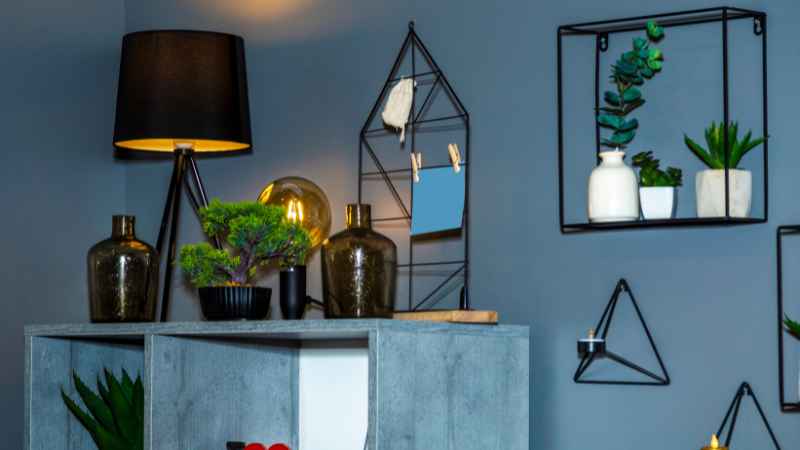
Environmentally Friendly DIY Practices
Using Eco-Friendly Materials
Opt for eco-friendly materials when embarking on DIY projects. This involves choosing sustainable, non-toxic, or biodegradable materials. For instance, using reclaimed wood, bamboo, or recycled fabrics reduces environmental impact while adding character to the project.
Recycling and Minimizing Waste
Practice waste reduction by recycling and repurposing materials whenever possible. Consider ways to minimize waste by reusing items or properly disposing of waste generated during projects. This could involve repurposing packaging materials or donating leftover materials to minimize environmental impact.
DIY enthusiasts can ensure a safe and environmentally conscious approach to their projects by prioritizing safety and integrating sustainable practices. These measures safeguard against potential hazards and contribute to a more sustainable and eco-friendly crafting process.
Tips for Showcasing Your Creations Effectively
Showcase your DIY creations effectively by considering placement, balance, and visual impact. Use design principles like balance, scale, and proportion to arrange items. Ensure that each piece has enough space around it to stand out without overcrowding the space. Experiment with different arrangements to find what works best for each item.
Creating Cohesive Spaces with DIY Elements
Achieve cohesion in your space by aligning DIY elements with the overall aesthetic and style of the room. Consider themes, color schemes, and the mood you want to evoke. Integrate DIY pieces with existing decor, ensuring they complement the room’s overall design rather than clash.
Tips for Preserving and Maintaining DIY Decor
Preserve the quality of your DIY decor by following maintenance guidelines specific to each project. This might include regular cleaning, using appropriate cleaning agents for different materials, or applying protective coatings where necessary. For instance, wood items might need occasional polishing or resealing to maintain their appearance.
Rejuvenating or Updating Decor Periodically
Periodically update and refresh your DIY decor to prevent it from feeling stagnant. Consider repainting, restyling, or making small modifications to keep the decor fresh and in line with evolving tastes. This could involve changing accents, reupholstering, or even repurposing items for different uses.
Effectively showcasing DIY creations and maintaining their quality over time is essential for ensuring their longevity and impact in your living spaces. Strategic placement and care and periodic updates contribute to a vibrant and enduring decor scheme.
Online Platforms and Communities for DIY Enthusiasts
Engage with online communities on platforms like Pinterest, Instagram, or DIY-specific forums. These spaces offer a wealth of inspiration, project ideas, and a supportive community where enthusiasts share their creations, offer tips, and discuss their experiences.
Books, Magazines, and Websites for Ideas and Tutorials
Explore various resources, including DIY books, home decor magazines, and dedicated websites that provide detailed tutorials, step-by-step guides, and creative ideas. These sources often cover a range of skill levels and offer diverse project inspirations.
Showcasing Success Stories and Inspiring Projects
Discover success stories and inspiring projects through platforms that feature home tours, before-and-after transformations, or interviews with DIY experts. These stories often showcase the creative journey, challenges faced, and the satisfaction of completing impressive projects, offering motivation and insights for your endeavors.

